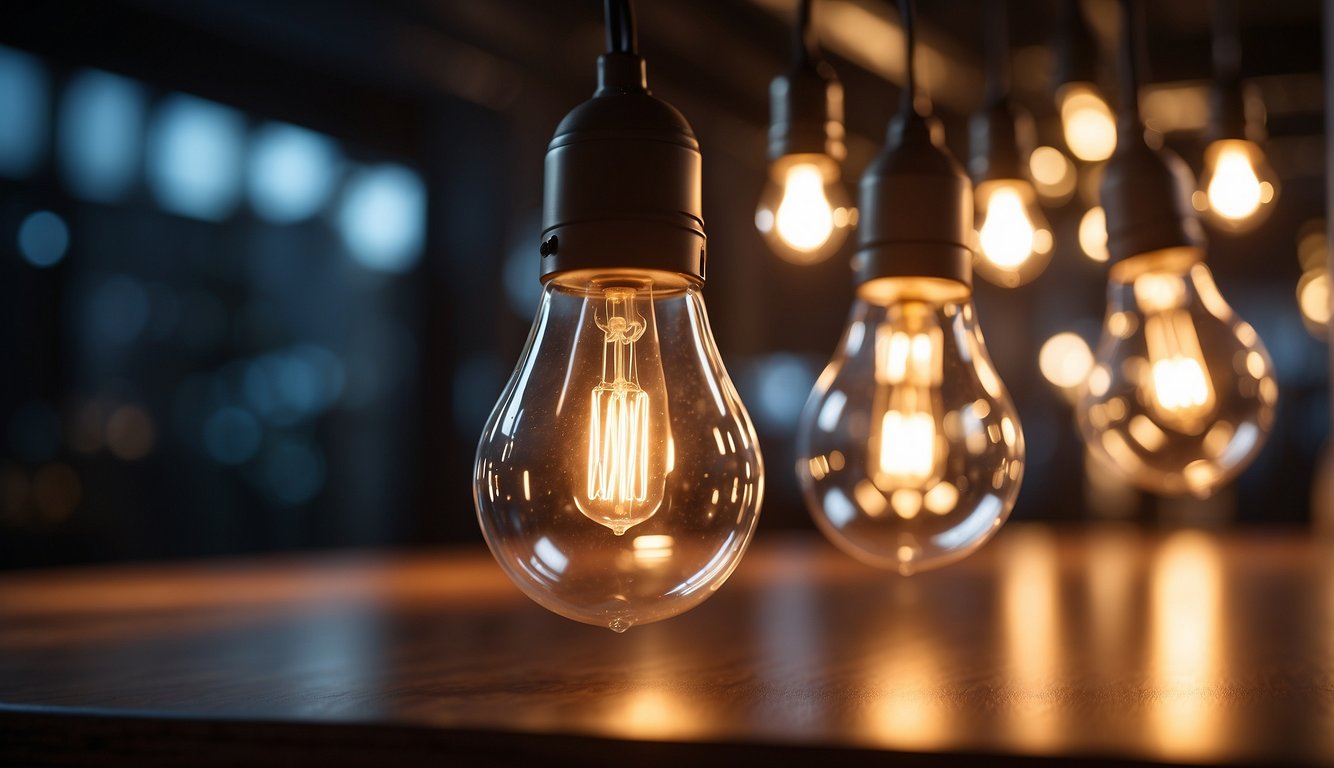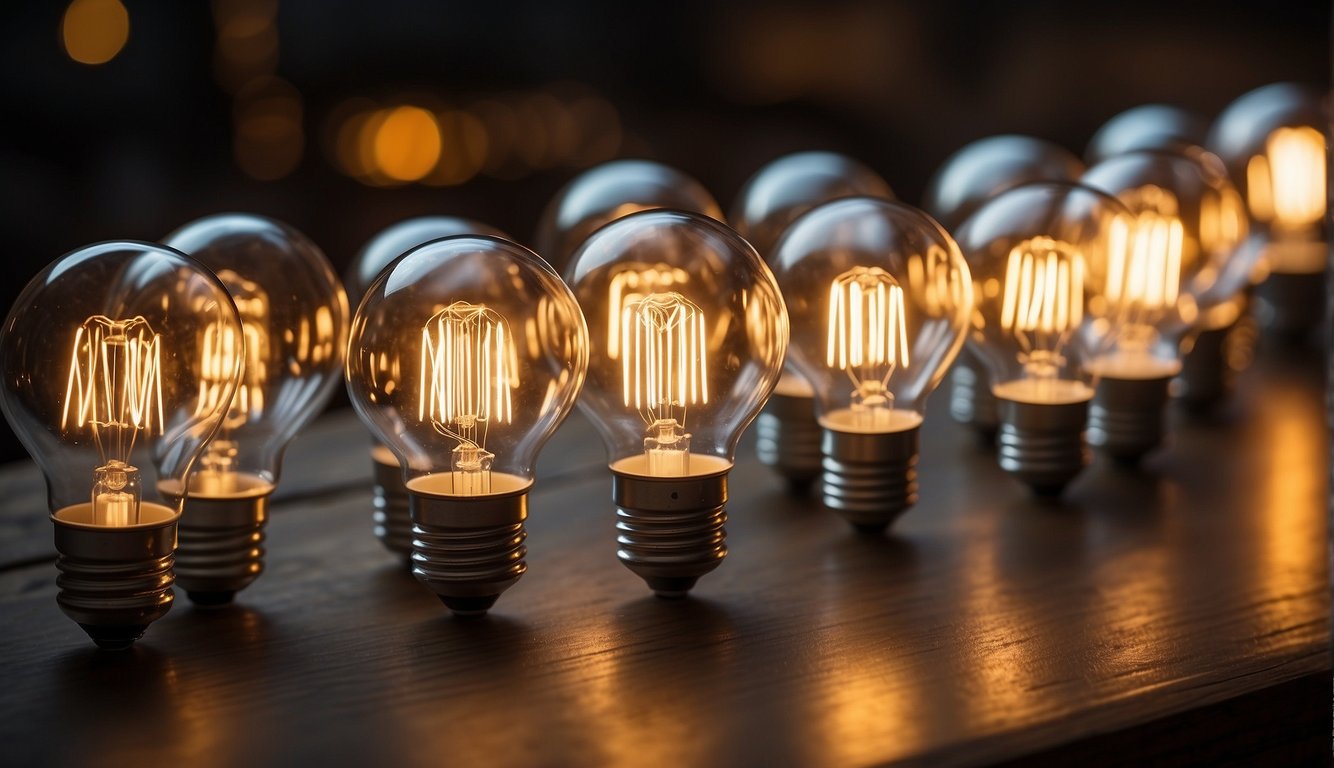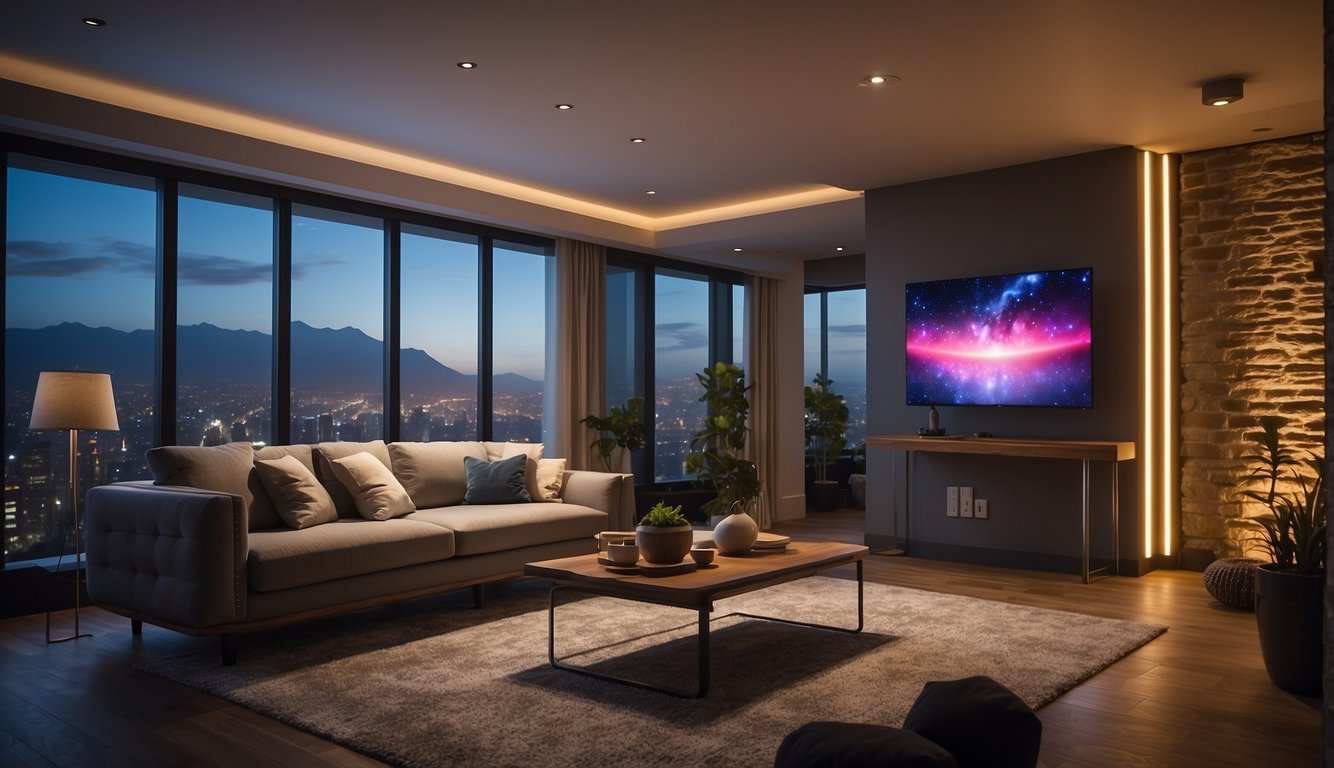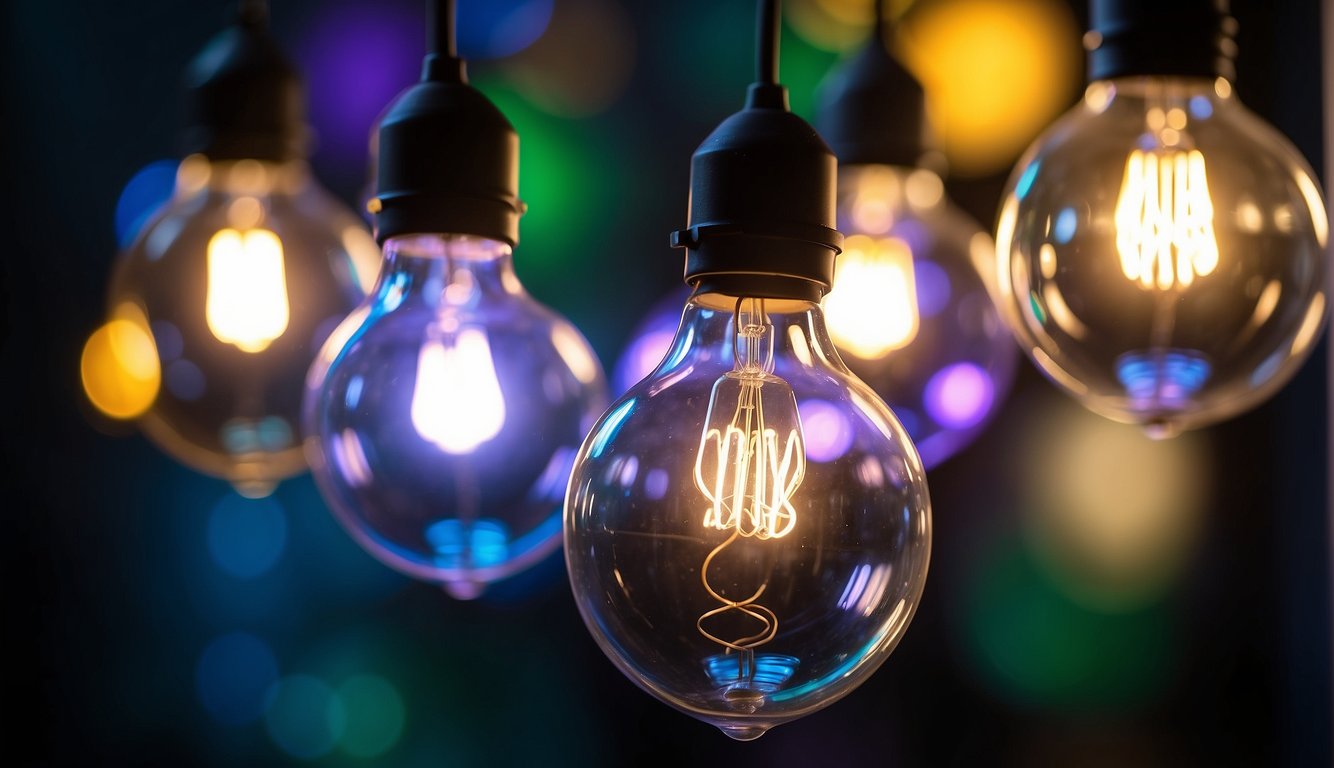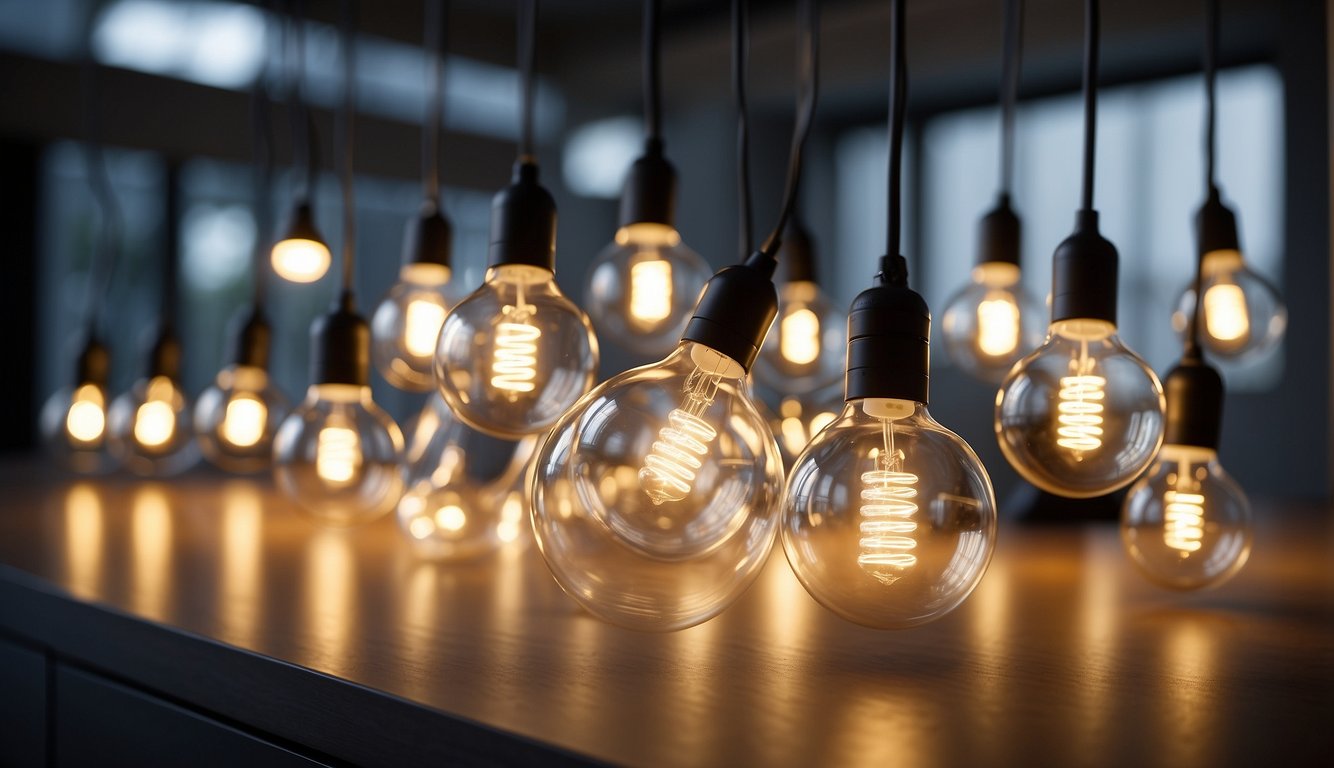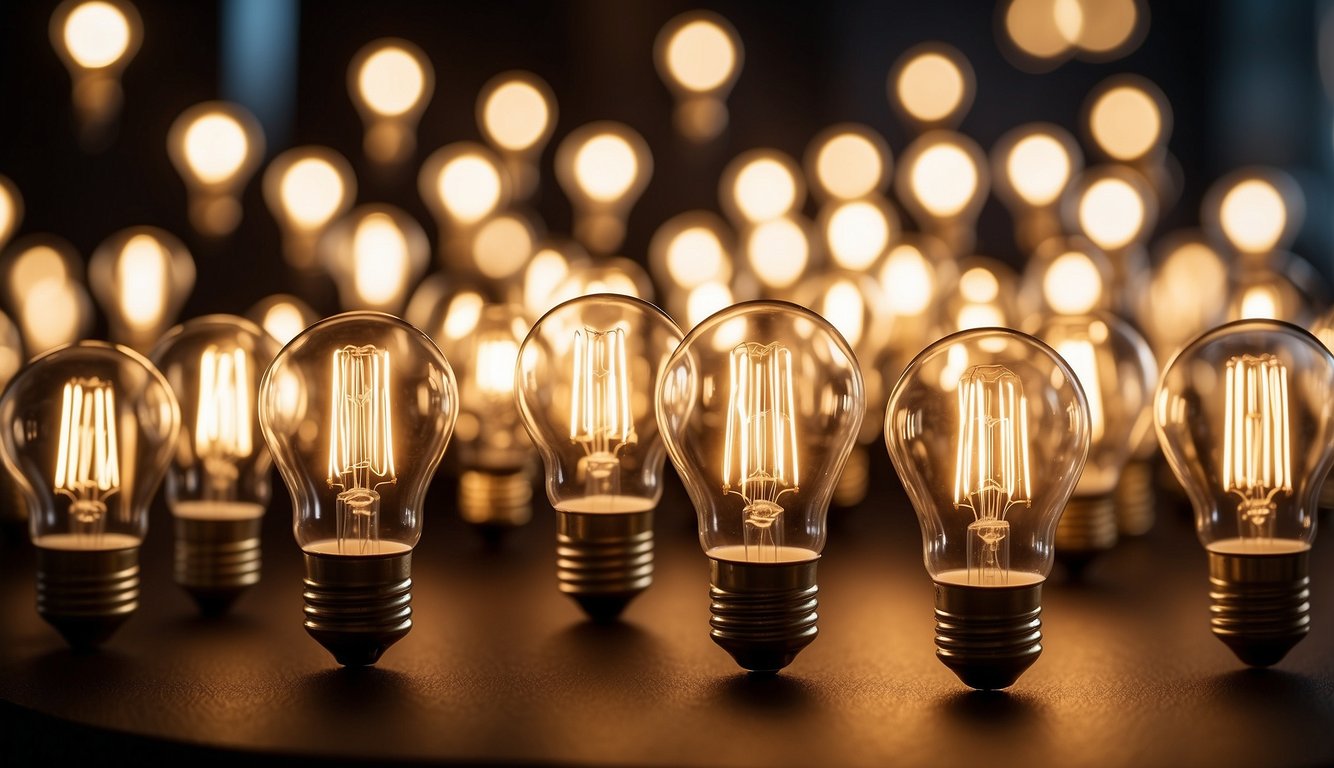Choosing the right light bulb isn’t just about replacing a burnt-out bulb; it’s about enhancing the comfort of your space, ensuring energy efficiency, and even improving your well-being. From the warm glow of a bedroom lamp to the bright white light needed in a home office, the type of light bulb you select can greatly affect the ambiance and functionality of any room. With a variety of options on the market, such as LED and incandescent bulbs, understanding the nuances of each can make the decision easier and result in a more tailored lighting experience.
In the pursuit of the best light for your home or workplace, it’s beneficial to consider not only the design and aesthetic aspects but also the practical implications. Modern advancements have introduced features like smart lighting options that enable control via mobile devices and voice commands, which add convenience and conserve energy. Health and environmental considerations also play a role; certain types of bulbs can reduce eye strain and have less environmental impact. With all the available options, finding the right bulb means balancing brightness, color temperature, energy savings, and special features to suit your specific needs.
Key Takeaways
- The ideal light bulb enhances the ambiance, energy efficiency, and your comfort in a space.
- LED and incandescent bulbs each have unique benefits suitable for different lighting situations.
- Modern bulbs offer features that add convenience and reduce environmental impact.
The Evolution of Light Bulbs
https://www.youtube.com/watch?v=uszG5FD1_Uw&embed=true

Light bulbs have undergone a remarkable journey from the simple incandescent versions of the 1800s to today’s smart LEDs. You’ll see how innovation in this field is not just about shedding light, but also about energy efficiency and longevity.
From Incandescent to LED
The quintessential incandescent bulb, a staple since its public introduction in the late 19th century, was the first widespread method for converting electrical energy into light. The principle was simple: an electric current heated a thin filament, typically made of tungsten, until it glowed. However, this method wasn’t energy-efficient, converting only about 5% of the energy into light and the rest into heat.
As society moved to more sustainable solutions, the Compact Fluorescent Lamp (CFL) emerged as a better choice. CFLs twisted their small glass tubes to fit into the same sockets as their incandescent predecessors while using about 70% less energy. Nonetheless, they had their drawbacks, such as a slower start-up time and the presence of mercury within the bulbs, leading to a need for careful disposal.
Halogen bulbs, on the other hand, are an enhanced type of incandescent bulb, using a halogen gas to increase both light output and efficiency. These tend to have a brighter light and longer lifespan than traditional incandescent bulbs but don’t quite match the energy savings of other modern alternatives.
Your best choice today, and the latest step in the evolutionary ladder of bulbs, is the Light Emitting Diode (LED). LEDs are a giant leap forward, consuming up to 90% less energy than traditional incandescent bulbs and outlasting all other types on the market. Not only have LED bulbs become synonymous with energy-efficiency, but they also come in various colors, are dimmable, and integrate with smart home systems, allowing you to control them conveniently.
What started as a simple glass bulb has now evolved into a technology that can be tailored to your needs while conserving our planet’s resources. When you choose your next bulb, remember that you’re not just illuminating your home; you’re part of a long history of innovation that continues to shine bright into the future.
Understanding Brightness and Color
https://www.youtube.com/watch?v=Ei5vS-g4DTo&embed=true
When you’re choosing light bulbs, it’s essential to understand how brightness and color can impact the mood and functionality of your space. Lumens measure brightness, while color temperature, indicated in Kelvin, defines the hue of the light.
Lumens vs. Watts
Lumens indicate the brightness of a bulb: the higher the lumens, the brighter the light. Watts, on the other hand, measure energy use. Traditionally, more watts meant more brightness, but with modern LED technology, you can achieve high brightness with far fewer watts. For example, an LED bulb can produce the same brightness as an incandescent bulb while consuming significantly less power.
- 60 watts incandescent = approximately 800 lumens
- 10 watts LED = approximately 800 lumens
Color Temperature and Ambiance
The color temperature of a bulb is measured in Kelvin (K) and affects the ambiance of a room. Lower Kelvin numbers mean the light is warmer and has a more yellowish hue, ideal for creating a cozy atmosphere. Here’s a quick breakdown:
- Soft White (2,700 – 3,000K): Warm and inviting, similar to traditional incandescent bulbs.
- Warm White (3,000 – 4,000K): A bit crisper, strikes a balance between warm and cool light.
- Bright White/Cool White (4,000 – 5,000K): Mimics daylight and is good for task lighting.
- Daylight (5,500 – 6,500K): Very bright and blueish, best for reading or intricate tasks.
A handy comparison is that soft white creates a warm glow for relaxing, while daylight mimics the noonday sun, ideal for reading or detail-oriented tasks. Choose your light color based on the mood you want to set and the activities you will do in the space.
Types of Light Bulbs
The light bulb market offers various options, each with unique features and benefits. Whether you’re looking for energy efficiency, specific shapes, or color rendering properties, there’s a bulb type that suits your needs.
LED Bulbs
« Best Light Bulbs That Mimic Daylight: Natural Illumination for Your Home
Best Way to Change High Light Bulbs: Safe & Simple Tips »
LED bulbs are your go-to for energy efficiency and longevity. They fit standard light sockets and offer a wide range of color temperatures and dimmability options. LED bulbs boast a high Color Rendering Index (CRI), making them ideal for places where color accuracy is crucial.
- Shapes available: Standard (A), Globe (G), Candle (B), Reflective (R), and more.
- Energy use: Lower wattage compared to incandescents.
- Feature: Often dimmable.
CFL Bulbs
Compact fluorescent lamps (CFL bulbs) also provide energy savings and feature a variety of shapes. These bulbs take a moment to warm up but offer a cost-effective alternative to LED bulbs. They typically don’t support dimming, so consider where you’ll use them.
- Shapes available: Spiral, Tube, Globe, and more.
- Energy use: More energy-efficient than incandescent bulbs but less than LED bulbs.
- Feature: Not all are dimmable.
Halogen Bulbs
Halogen bulbs are a type of incandescent light that offers bright, white light, closely mimicking natural daylight. These bulbs are fully dimmable, which works well for ambiance setting. They are less energy-efficient than LEDs and CFLs but are a suitable option for specific lighting needs.
- Shapes available: Spot, Flood, Decorative, and more.
- Energy use: More efficient than traditional incandescents, less than LEDs and CFLs.
- Feature: Typically dimmable.
Incandescent Bulbs
Though largely phased out, incandescent bulbs are the traditional choice that others are compared against. They provide warm light with excellent color rendering. Incandescents are not energy-efficient and have a shorter lifespan but are often dimmable.
- Shapes available: Standard (A), Globe (G), Candle (B), and more.
- Energy use: High energy usage.
- Feature: Excellent dimmability.
By choosing the right bulb type, you can balance your lighting needs with energy consumption, cost, and the lighting effect you desire.
Selecting the Right Bulb for Your Space
https://www.youtube.com/watch?v=IbWAVyAl2so&embed=true
When illuminating your home, consider not just the brightness but also the color temperature of the bulbs to create the ideal atmosphere. Remember that energy-efficient options such as LEDs can provide both ample light and cost savings over time.
Kitchens
For your kitchen, where you handle intricate tasks like chopping and measuring, bright, energy-efficient LED bulbs can provide the task lighting you need. Choose bulbs with a cooler color temperature (3500K to 5000K) to ensure a clear, alert environment. Overhead ambient lighting combined with under-cabinet lights creates a well-lit space for cooking and socializing.
Bedrooms
Your bedroom should be a cozy sanctuary. Opt for warmer bulbs (2700K to 3000K) that create a relaxing ambiance. Also, consider dimmable LEDs for reading lamps, providing task lighting that can be adjusted to wind down before bed.
Bathrooms
In bathrooms, bright lighting is crucial for tasks like applying makeup or shaving. A combination of overhead lights with side fixtures or a well-placed mirror light can reduce shadows and offer better visibility. Look for bulbs with a color temperature close to daylight (around 5000K) to achieve a functional yet inviting space.
Living Rooms
Your living room requires versatile lighting options due to its multifunctional nature. Soft, warm bulbs (2700K to 3000K) can create a welcoming and restful environment. Variable lighting setups, including accent lamps and adjustable overheads, allow for flexibility whether you’re hosting guests or settling in for a movie night.
Offices
In your office, good lighting is essential to reduce eye strain and maintain concentration. Use cooler bulbs (3500K to 5000K) that mimic daylight to keep you alert during work hours. LED bulbs that provide a balance of ambient lighting overhead and task lighting at your desk can help focus and efficiency.
By tailoring light bulb choices to each room’s specific function and your personal aesthetic, you’ll enhance both the functionality and mood of your living spaces.
Energy Efficiency and Savings
https://www.youtube.com/watch?v=8CgGItdcwdg&embed=true
When you switch to energy-efficient light bulbs, you’re not just contributing to a greener planet; you’re also setting the stage for noticeable savings on your electricity bills. These bulbs, including LED and compact fluorescent lights (CFLs), offer significant cost benefits over the long term due to their lower energy consumption and longer lifespan.
Reducing Electricity Bills
By selecting energy-efficient light bulbs, you can reduce your electricity bills substantially. These bulbs are designed to use less power to emit the same amount of light as traditional bulbs, which means they can save up to 90% in energy use. For example, an ENERGY STAR certified light bulb leverages advanced technology to minimize your energy costs effectively.
Long-Term Cost Benefits
In addition to immediate savings on your electricity bills, the long-term cost benefits of energy-efficient lighting are hard to ignore. Not only do these bulbs use less energy, but they also last significantly longer. For instance, LEDs can last up to 25 times longer than incandescent bulbs. This increased lifespan means you’ll buy fewer bulbs over time, reducing your overall expenses. Moreover, the reduction in maintenance and replacement costs adds another layer of long-term savings for your household.
Smart Lighting Options
When you’re looking to upgrade your home lighting, smart bulbs offer convenience and versatility. These innovative lights can connect to your home network for easy control, and many are compatible with digital assistants like Alexa and Google Assistant.
Smart Bulbs
Smart bulbs are your go-to for a personalized lighting experience. They usually support Wi-Fi or Bluetooth connectivity, enabling you to adjust brightness and color directly from your smartphone. Here’s a quick list of features you might find in smart bulbs:
- Dimmable: Adjust brightness as needed.
- Color-changing: Set the mood with different colors.
- Scheduling: Program your lights to turn on or off automatically.
- Voice Control: Use with Alexa or Google Assistant for hands-free management.
For instance, the Kasa Smart Light Bulb is praised for its easy setup and controllability.
Smart LED Bulbs
Smart LED bulbs bring energy efficiency to smart lighting. They consume less power and can last longer than traditional bulbs. These smart LEDs often come with all the features of standard smart bulbs but with the added benefits of LED technology:
- Energy-saving: Lower your electricity bills with efficient LEDs.
- Longevity: LEDs have a longer lifespan, which means fewer replacements.
- Eco-friendly: Reduce carbon footprint due to lower energy usage.
You can learn more about smart LED bulbs and their benefits in a comprehensive guide from Best Smart Light Bulbs – Guide for Smart Light Bulbs.
With smart bulbs and smart LED bulbs, your home lighting becomes an integral part of your smart home system, offering both comfort and efficiency.
Special Features of Modern Bulbs
Modern bulbs are leaps and bounds ahead of their predecessors, offering you a range of convenient and energy-saving features. Whether you’re setting the mood or automating your home, these advancements transform how you illuminate your space.
Dimmers and Controls
Dimmable LED bulbs have taken your lighting experience to new heights. You can adjust brightness to your preference, from a cozy glow to energizing brightness. Not only does this feature help you tailor the ambiance of a room, but it also contributes to energy savings. Pay attention to compatibility; ensure that your dimmer switches are suitable for LED use to prevent unwanted flicker or buzz.
A handy tip: Look for Energy Star certified bulbs to guarantee efficiency and quality in your dimmable lighting.
Motion Sensors and Automation
For convenience and security, modern motion sensors in lighting are a game-changer. These sensors trigger lights to turn on when activity is detected, which is perfect for outdoor lighting or places like hallways and bathrooms. Plus, you’re saving energy by only using light when needed.
Automation adds another layer of smart technology. You can program your lights to turn on and off at specific times or even control them remotely. With these advancements, you won’t even need to flip a switch to light up your home—it can all be done with a simple voice command or a tap on your phone.
Health and Environmental Considerations
https://www.youtube.com/watch?v=faf5Imwe-RA&embed=true
When selecting light bulbs for your space, it’s important to consider not just the ambiance they create but also their health and environmental impacts. Some bulbs may be more eco-friendly and durable, while others can affect your well-being with factors such as mercury content and blue light exposure.
Mercury Content
Compact Fluorescent (CFL) Light Bulbs: These bulbs contain mercury, a toxic heavy metal that can pose environmental hazards if the bulbs break or are improperly disposed of. While they are more energy efficient than traditional incandescent bulbs, caution is necessary in their use and disposal.
- Safe Handling: If a CFL bulb breaks, you should follow proper cleanup guidelines to avoid mercury exposure.
- Proper Disposal: Because of the mercury, it’s crucial to dispose of CFL bulbs as hazardous waste according to local guidelines.
Blue Light Exposure
LED Bulbs: While these bulbs are highly energy-efficient and durable, they emit blue light, which can impact your sleep pattern and potentially your eye health.
- Nighttime Use: Try to limit exposure to blue light from LEDs before bed to maintain a cozy and comfortable sleeping environment.
- Choosing Bulbs: Look for LEDs with a warmer color temperature to reduce blue light exposure while still enjoying an energetic and comfortable atmosphere.
Aesthetic and Design Choices
When selecting light bulbs, your aesthetic preferences and the design of your space play a crucial role. You have a vast array of choices that can complement your décor and set the right mood.
Shapes and Designs
Your lighting can drastically change the ambiance of a room. Shapes range from traditional A-line (pear-shaped) bulbs to more unique and modern options like globes and tubes. Designs also include the shape of the filament itself, which can be a spiral, a zigzag, or a classic straight line. For a contemporary space, you might consider a bulb with a clean and simple design, while ornate filaments can add a decorative touch.
- A-line bulbs: Perfect for general lighting
- Globe bulbs: Casts soft, even light, ideal for vanities
- Tubular bulbs: Works well in pendant fixtures for a modern look
When considering color accuracy, referred to as the Color Rendering Index (CRI), look for bulbs that have a higher CRI for the most natural and vibrant color representation in your surroundings.
Vintage-Style Edison Bulbs
Vintage-style Edison bulbs create a nostalgic and warm feel. These bulbs are not just about illumination; they’re a statement piece. Their designs typically feature an exposed filament that glows, reminiscent of the early days of electric lighting. Perfect for accent lighting, they can bring an old-time elegance to a modern setting.
- Chandelier Edison bulbs: Ideal for adding a classic touch to your chandelier
- Candelabra Edison bulbs: Best for smaller, more intricate light fixtures
When choosing Edison bulbs, consider their durability—they can be more delicate than standard bulbs. Moreover, they come in various shapes, including the traditional teardrop and rounded forms, which can be matched to your fixtures for a cohesive look.
Top Brands and Manufacturers
When you’re looking for quality light bulbs, two names often stand out: Philips and its smart lighting line Philips Hue, and manufacturers like Cree and Feit Electric. These brands are known for their reliability and innovation in lighting technology.
Philips and Philips Hue
Philips is a well-established leader in the lighting industry, offering a wide range of options that cater to various lighting needs. Their advanced line, Philips Hue, brings smart lighting to your home, allowing you to control the ambiance and mood with a tap on your smartphone or voice command. For a seamless smart home experience, check out the Philips Hue A19 E26 Smart Bulb, noted for its variety of colors and compatibility with home automation systems.
Cree and Feit Electric
Both Cree and Feit Electric have built a reputation for durable and energy-efficient bulbs. Cree specializes in LED technology that promises a longer lifespan and significant energy savings. On the other hand, Feit Electric offers a diverse range of lighting solutions, including bulbs for every setting, such as the dimmable options available on Amazon. These brands are dedicated to quality and regularly available at major retailers such as Home Depot.
Safety and Certification
https://www.youtube.com/watch?v=COp9OU5VqpY&embed=true
When considering light bulbs for your home or office, it’s crucial to focus on safety and certification. These factors ensure that the products you choose are not only safe but also reliable. Products that have achieved certain certifications meet strict safety standards and often come with warranties that provide peace of mind over time.
UL Listing and Warranties
UL Listed: When you see a light bulb listed as UL Listed, this means it has undergone rigorous testing to ensure it meets specific safety standards. This certification signifies that the light bulb is safe for use in various environments, including potentially damp locations. Trusting UL Listed products means you’re prioritizing your safety at home and at work.
Warranties: On top of safety certifications like UL Listing, a light bulb with a five-year warranty provides an additional layer of assurance. It not only speaks to the confidence manufacturers have in their products but also ensures that they stand behind their products’ performance and long-term reliability. When selecting your light bulbs, take note of warranty periods; a longer warranty often reflects a commitment to quality.

